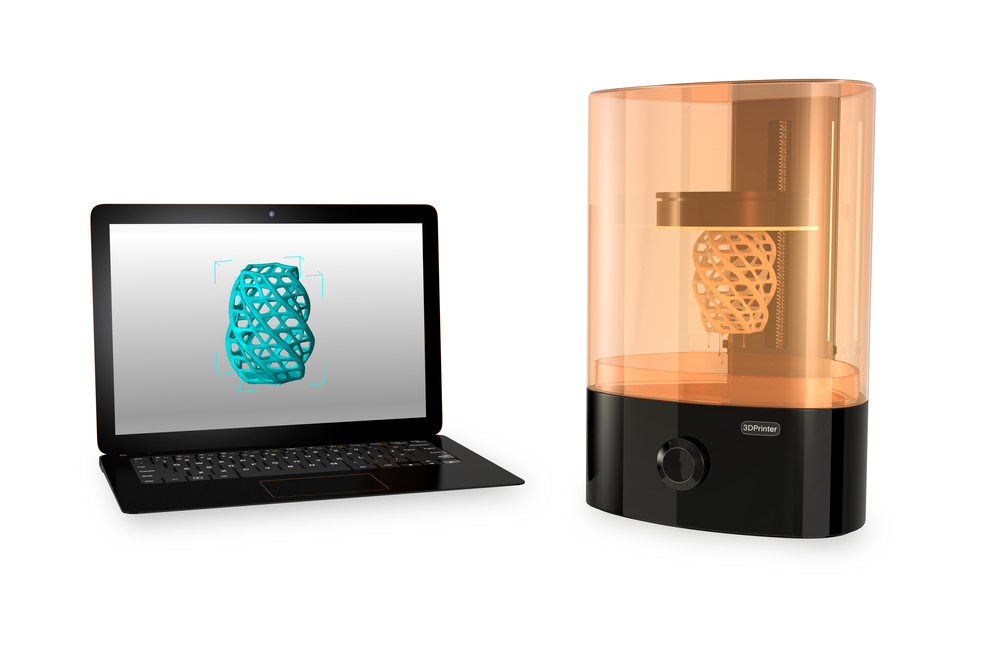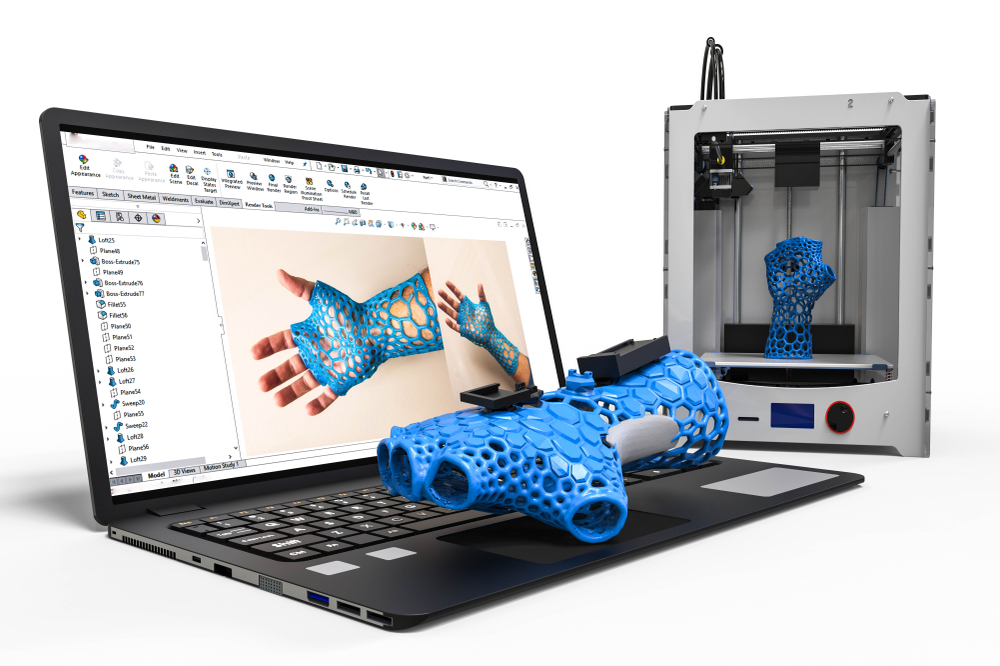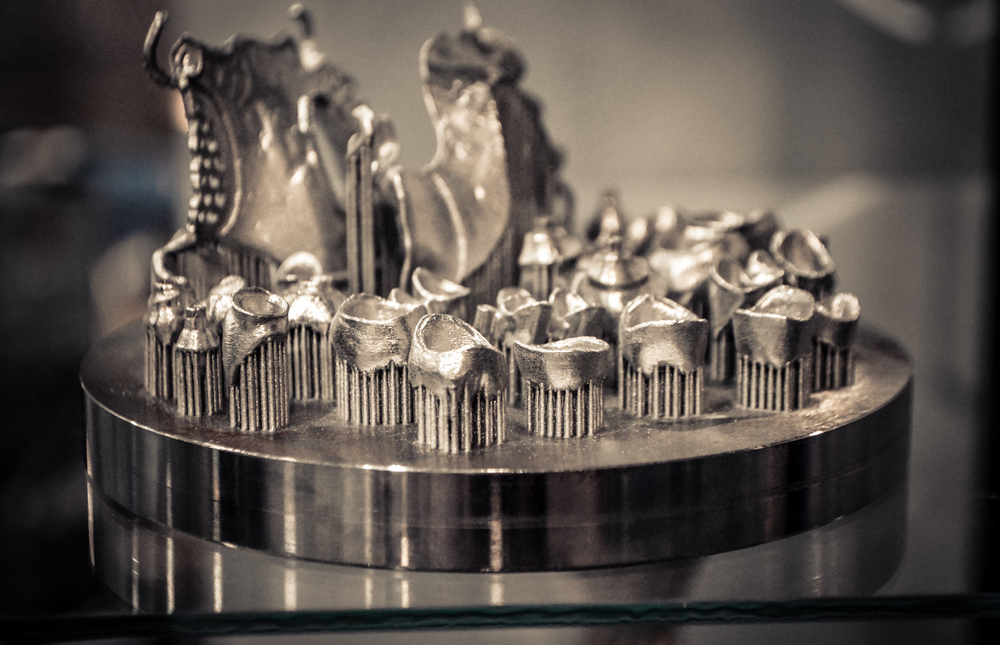In today’s fast-paced, technology-driven environment, there is a drive to shorten product development cycles. Prototyping is a key process to developing new products. However, current methods for manufacturing prototypes are long and expensive. Rapid prototyping involves rapidly producing prototypes of a new product to test out function and form or aesthetic. Experimenting with the aesthetic and functional design choices can derisk designs before they go into production.
Rapid prototyping with traditional methods requires tooling – just like volume production processes. Tooling slows down and adds cost to product development cycles. 3D printing provides an alternative prototyping production process that removes tooling constraints, giving product designers a flexible, on-demand option for product development and scaling.

How Tooling Inhibits Traditional Rapid Prototyping
Most traditionally manufactured products need tooling for production. Product designs are often modified to accommodate tooling and process limitations to ensure product yield and quality. Tooling introduces the following challenges:
- High tooling costs : For some products, each prototyping run may require changes to tooling. Tooling changes incur extra costs and time, limiting the number of prototypes that can be developed and tested.
- Design constraints: Tooling can also limit designs or require greater production complexity. Usually complex designs need simplification for tooling, or the part must be designed and made as multiple parts and assembled.
- Prototyping and production process mismatch: With high tooling costs and time, rapid prototyping often uses an alternative process that does not match the particular high-volume production process. Once finalized, a prototype may need to undergo redesign and revaluation to fit a standard high-volume production process.
Today’s product developers need an alternative set of processes for rapid prototyping that can also scale to volume production. 3D printing systems provide the required alternatives, giving product developers a flexible, scalable, on-demand solution for rapid prototyping and volume production.
Advantages of 3D Printing in Rapid Prototyping
3D printing solutions help overcome tooling challenges in rapid prototyping in three key areas.
Design Exploration With Multiple Variants
Using 3D printing for rapid prototyping allows a company to produce multiple variants of a product in parallel. Depending on the size of a printer’s build area, numerous variants of a prototype can print in batches. Each variant can include different functional and aesthetic features, allowing a designer to experiment with its form, fit, and function.

In general, the design space for 3D-printed prototypes is much broader than that for prototypes produced with traditional processes like injection molding. In addition to experimenting with designs, product designers can also stay agile as they develop their prototypes.
Staying Agile While Prototyping
If a product requires redesign due to a defect, tooling does not need to change between prototyping runs. 3D printing allows product designers to take an agile prototyping approach to product development. If the product needs functional, aesthetic, or structural changes to meet changing market demands, companies can apply these changes instantly and print a new batch prototyping run.
Closer Match Between Prototyping and Production Processes
Once prototypes finalize, the transition to high-volume production can happen immediately. Finished prototypes do not require redesign to fit the manufacturing process for quality and yield. When companies use 3D printing for prototyping, the same process can apply to full-scale, as long as designers qualify the design and 3D printing materials.

All three of these advantages help speed up product development and derisk manufacturing operations. Although traditionally seen as purely a prototyping process, today’s modern 3D printing systems and advanced materials allow volume production of unique products with competitive cost, lead time, and many other advantages.
Transition to Volume Manufacturing with 3D Printing
3D printing provides other advantages when used for full-scale production, not available in traditional manufacturing processes. When you use the right 3D printing solutions, you can instantly transition to volume production in a smart factory on-demand and with low MOQ. Companies can seamlessly implement high-mix, low-volume manufacturing, and customizable products with 3D printing due to the lack of tooling and quick transition to volume production. Working with the best 3D printing solution can set you up for success and give you an option for on-demand production and flexible scaling.
If you want to transform your high-volume manufacturing process and make it more agile, LuxCreo can help by giving you the best 3D printing solution. They use the LEAP™ (Light Enabled Additive Production) process and can deploy at scale. LuxCreo’s system of cloud-connected 3D printers also helps you scale with on-demand production in an overseas smart factory. For more information on how our services can improve your supply chain and manufacturing processes, visit our contact page or call (650) 336-0888.
